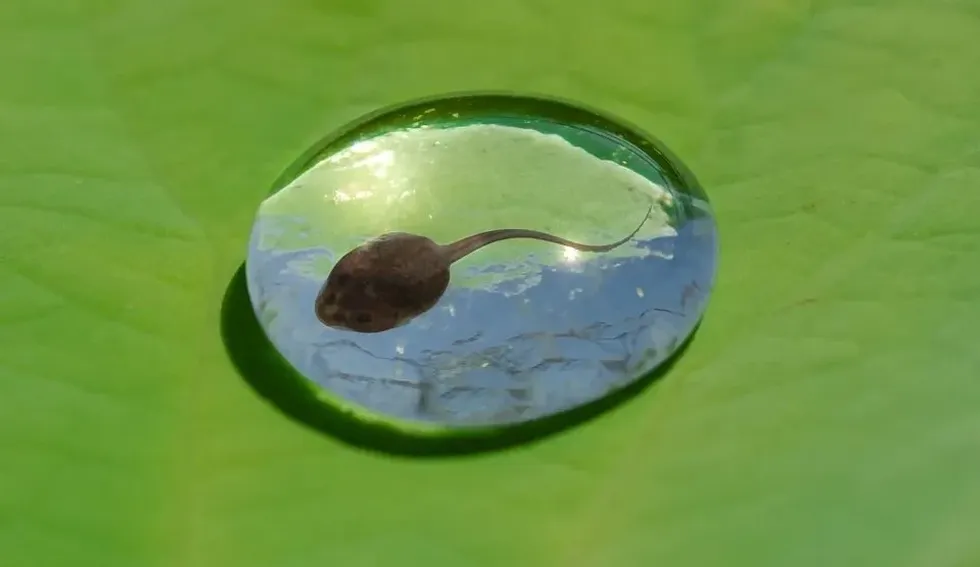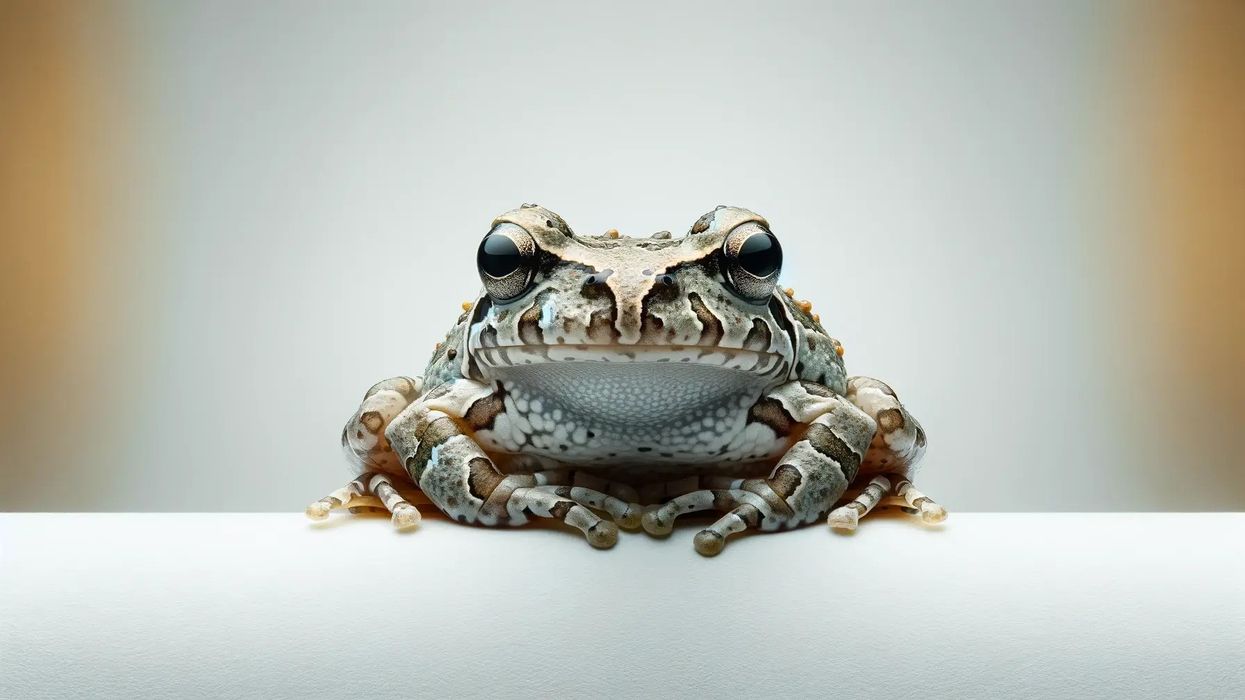The life cycle by which a tadpole develops into a frog is one fascinating journey. If you are keen to keep them as pets, read on as we share some interesting facts about this larval stage of frogs and toads.
Tadpoles live in water and have certain features like gills to breathe, tails, and lateral lines that help them survive in water. As they grow and metamorphize into frogs/toads, features like the gills, tails disappear, and forelimbs, legs, and lungs develop.
There are more than 6000 species of frogs in the world. So their babies come in varying sizes, colors, weight, and the time they take to metamorphize into adult frogs/toads also vary.
Another name for a tadpole is polliwog. The name tadpole comes from the Middle English word 'taddepole,' which has elements that mean 'toad' 'head.' Similarly, polliwog comes from the word 'polwygle,' which means 'head' and 'wiggle.' Read on for more fun facts!
If you want to read more about frogs, check out our articles on tree frog and pool frog.
Tadpoles Interesting Facts
What type of animal are tadpoles?
A tadpole is the aquatic larval stage in the lifecycle of a frog. It lives in water and has internal gills to breathe underwater and a tail for movement. As it grows to become a frog, the internal gills eventually disappear, and lungs develop.
What class of animal do tadpoles belong to?
Tadpoles are amphibians. Even at this stage, they have fish-like features like tail for movement, internal gills to breathe; they eventually outgrow it and develop lungs when they become froglets.
How many tadpoles are there in the world?
To tell the truth, you cannot have a count of tadpoles in the world. Depending on the species, a female frog can lay anywhere between 200-20,000 eggs at a time.
Of these eggs, about 1 in 50 eggs will survive to become a tadpole. There are hundreds of thousand frogs in the world, and it is not possible to have their count at a given time.
Where do tadpoles live?
They are aquatic, and hence they live in water.
What is a tadpole's habitat?
They inhabit wetlands, ponds, creeks, lakes, rivers, streams, small bodies of water. Some frog species have adapted to varied environments; their tadpoles are terrestrial and are they live in wet crevices near water sources.
Who do tadpoles live with?
Tadpoles typically swim around in groups called shoals. Typically tadpoles are quite vulnerable to their predators like birds, hedgehogs, fishes, and snakes; by moving around in groups, they lower the risk of being predated and increase the chances of getting their food.
How long do tadpoles live?
Once the tadpoles are released from the eggs, they take about 14-16 weeks to turn into tiny froglets.
How do they reproduce?
Tadpoles are in an in-transit state in the process of becoming frogs and are not mature enough to reproduce.
Frogs are oviparous animals. When a male and a female frog mate, the females lay the eggs, and the fertilization of the eggs is taken care of by the male outside its body.
The frog eggs are clumped together while toad eggs are attached to one another like in a string. The eggs appear translucent with a jelly-like appearance and are the nutrient source for the tadpole for almost 21 days. When the tadpoles grow in size, they wiggle out, and the eggs hatch.
What is their conservation status?
A tadpole, in general, is not evaluated for its conservation status. But certain frog species are in the endangered category, like the Corroboree frog, Booroolong Frog, and some others, which means that their tadpoles also fall in the same category.
Tadpoles Fun Facts
What do tadpoles look like?
Once the eggs are hatched, they come wiggling out. They are characterized by a long tail and a bulbous head. The rest of their features are not much prominent.
They look similar to fish. However, as they mature, they follow a developmental pattern.
The fore and hind limbs sprout out, their tail is absorbed back into their bodies, the gills disappear, and lungs are formed, and the intestine gets shorter. It no longer looks like fish. When the transformation is complete, the tadpole becomes a froglet or toadlet and is ready to jump into the land.
How cute are they?
A tadpole of frog/toad can't be classified as cute looking. They look like tiny little fishes with big heads and long tails as they wiggle around in the water.
How do they communicate?
Tadpoles are said to communicate largely through body movement. A study by scientists at the National University of La Plata in Buenos Aires revealed that a particular species of tadpoles let out an audible scream when in distress.
How big are tadpoles?
There is a huge variation in their sizes depending on the species. For instance, the tadpole of Paradoxical Frog gets as long as 11 in while those belonging to the Megophryidae family lies in the range of 1.3-4.2 in. The Bullfrog tadpoles can get as large as a medium-sized banana.
How fast can tadpoles swim?
A study at the Dalhousie University, Halifax, concluded that they could swim as fast as teleost fishes of similar sizes.
How much do tadpoles weigh?
The weight of the tadpoles varies widely. It is likely that they weigh more than a few ounces owing to their small size.
What are their male and female names of the species?
There is no different name to distinguish a male and female tadpoles.
What do they eat?
In the early days of their life, they are herbivores and primarily eat algae and some parts of plants. When the eggs hatch, their first food is the yolk sack which is protein-rich and helps them to grow fast.
Once they are mature, they can eat almost anything; in case of scarcity of food, they even feed on smaller polliwogs. They are also known to scavenge on the residue of dead animals in the water. Larger tadpoles prey on other amphibian eggs, small insects, and water striders.
Are they poisonous?
Some polliwogs are known to be poisonous. The polliwog of poison dart frogs is most poisonous.
Would they make a good pet?
If you are someone who is interested in the life of a tadpole and would like to see a tadpole develop into a frog, you can consider the idea of having them as a pet.
Did you know...
Of all the eggs laid by the female frogs that turn into a tadpole, not all survive to become frogs. That is because frogs at various stages of their development fall prey to other animals.
Some eggs that don't get enough water can dry up, while some are eaten by predators. So it is likely that many tadpoles will die before turning into frogs.
One of the reasons why frogs lay a large number of eggs is because it increases their chances of producing offspring. By laying a huge number of eggs, it ensures that at least some will beat the odds and grow up.
How long does it take for a tadpole to become a frog?
For most of them, it takes around 12-16 weeks for the development of a tadpole into a frog.
How to take care of tadpoles?
Firstly, you should get the right size tank for them. A 2-5 gallon tank should suffice for most species of a tadpole. It is ideal for keeping 15-35 tadpoles per gallon of water.
Line the tank with gravel, add some large rocks, weeds, and grass (with roots). The water you use to fill up the tank should ideally be from a natural source like a pond (from where you are collecting the tadpoles).
Tap water is treated with chemicals and is not suitable for them. Keep the tank away from sunlight. A temperature of 15-20 degrees C is ideal for their survival.
So the question arises what do tadpoles eat or what to feed tadpoles? You can feed the tadpoles tiny pieces of boiled lettuce or get specialized tadpole food packets that are readily available. You should change the water every week. In a few weeks, they turn into froglets, and you will have to feed them frog food.
Here at Kidadl, we have carefully created lots of interesting family-friendly animal facts for everyone to discover! Learn more about some other amphibians, including common toad or Surinam toad.
You can even occupy yourself at home by drawing one on our tadpole coloring pages.









